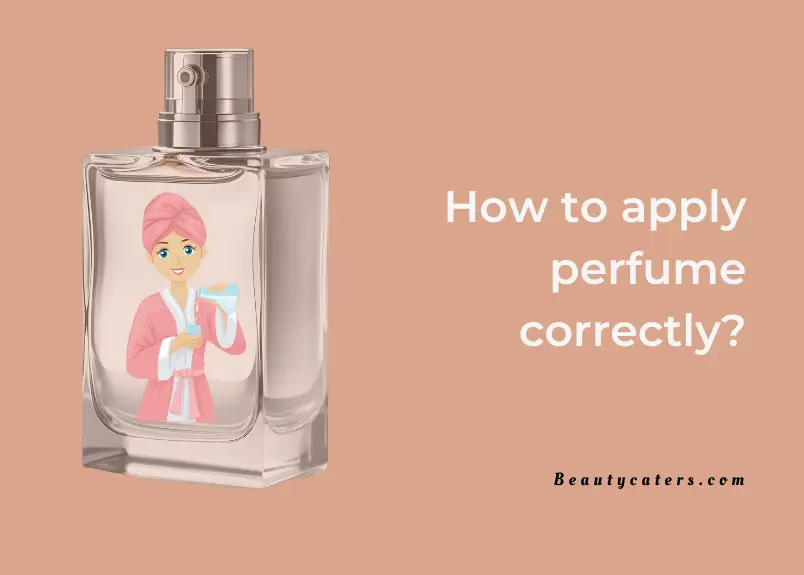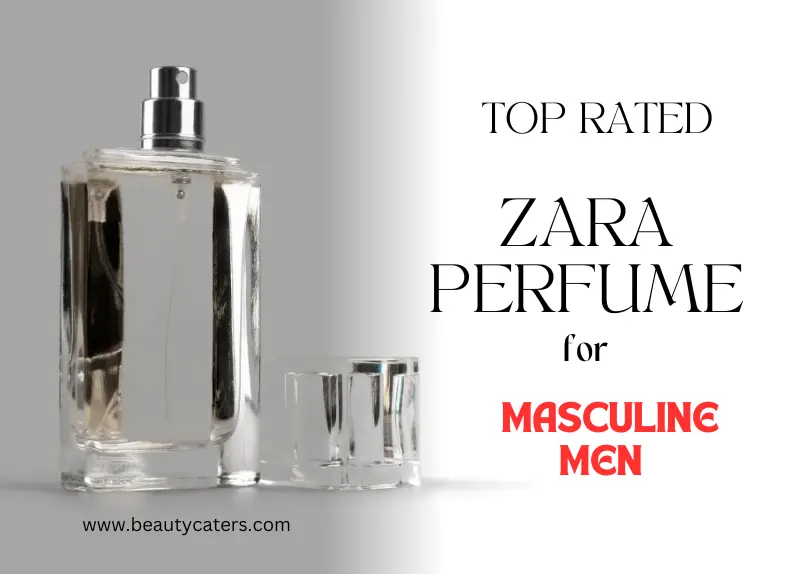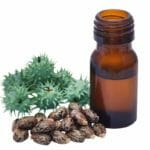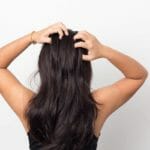How to make perfume at home: Step-by-step guide
At BeautyCaters, our expert team independently curates every recommended product. Purchases through our links may earn us a commission. Explore our transparent selection process.
When for the first time I experimented if I can make perfume for myself, my friends told me just buy it. But I was curious, how to make perfume at home?
I am going to share my experience of making perfume with you.
There are several ways to make perfumes at home and on an industrial scale. Over the years, perfumers have specialized in techniques such as expression, distillation and extraction to obtain pleasant and exclusive scents.
If you are passionate about good scents, we will teach you the steps to create your own perfume in a simple way. We will also tell you about the procedures used in the industry to create top-quality scents, ready to be marketed.
Whether you want to open a perfume business or you just like the subject, we offer you valuable information about the manufacturing process of these products.
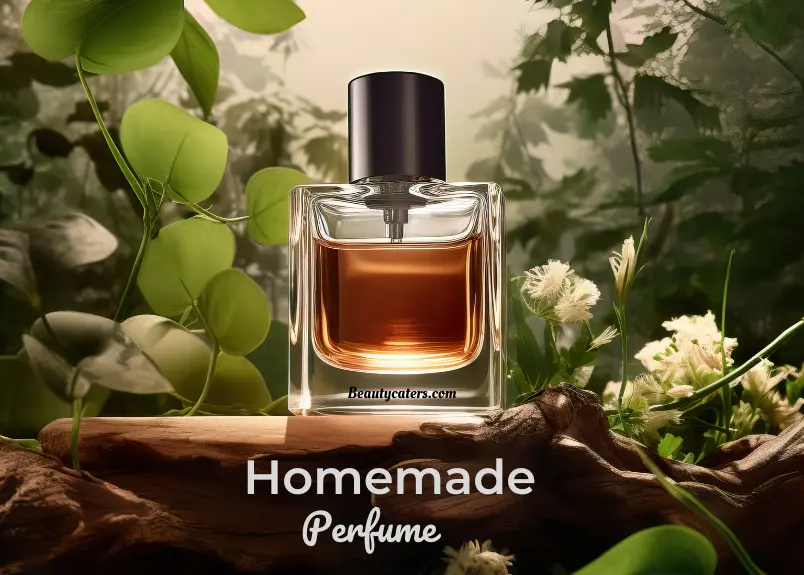
How to make homemade perfumes? Easy guide
To make homemade perfumes there are 2 basic methods, one without alcohol, which uses fresh flowers to preserve their aroma, and another with alcohol that helps you to enhance and combine the aroma of essential oils.
You can choose the one that suits you best. The idea is to obtain a perfumed oil and mix it well with a preservative substance, so that it lasts long enough. If you want to try your luck as a perfumer, follow these steps and create your scent.
Make your perfume without alcohol
Take advantage of this alcohol-free method to make your homemade perfume directly from flowers without using essential oils. Just be sure to follow these steps:
Step 1: Get the necessary ingredients
If you’re a perfume lover, chances are you’ve never thought about making your own homemade fragrance. To accomplish this, the first thing you need to do is to get an unscented oil to make the mixture.
Tip: 1
Select citrus scents for the top notes, for the middle notes you can use flowers with relaxing effects such as lavender or roses, and for the base you can use woody scents.
This type of oil is used as a base oil because it does not add fragrance to the preparation, but serves to trap the scent of the ingredients you use in your perfume. Among the best are almonds and jojoba. Once you have the oil, you must get:
- Flower petals or aromatic herbs that you like (The amount will depend on the type of flowers you choose and their aroma).
- Two glass jars with lids (preferably dark)
- Vitamin E (2 drops for a small jar)
- A fine filter
When choosing the flowers you will use, you can select up to 3 different types (for the top, middle and base notes).
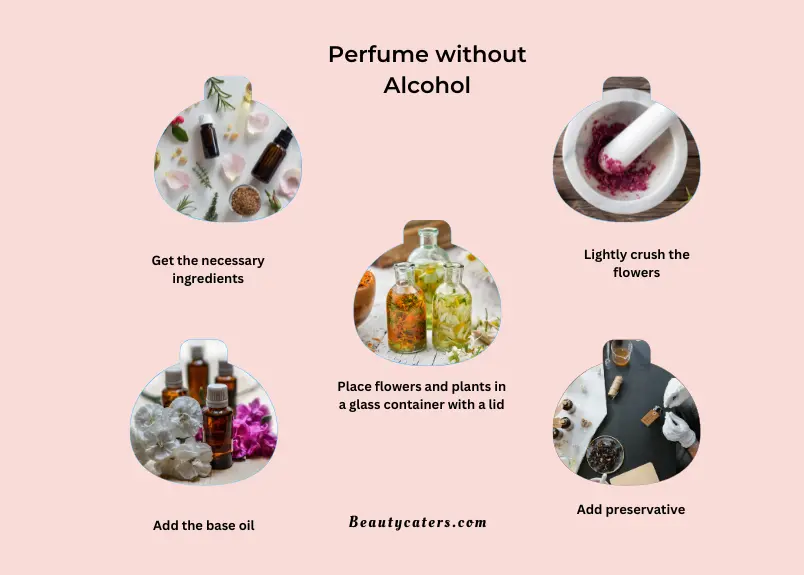
Tip: 2
Choose fresh flowers and plants, with a strong aroma, so that you do not have to use a large quantity when extracting their scent.
Step 2: Slightly crush the flowers
Place the plant-based ingredients in a clean bowl or large container where you can handle them. Make sure the flowers are free of impurities such as weeds or soil.
Once you have everything ready, crush the petals slightly without crushing them. This will help you release the scent more easily.
Step 3: Place the flowers and plants in a glass container with a lid
Step number three is to pour the plant-based ingredients inside one of the glass jars.
Make sure it is clean and dry, as natural ingredients can easily become contaminated.
Step 4: Add the base oil
Once the plant ingredients are lightly crushed and in the glass jar, add the carrier oil to trap this essence.
It should coat the flowers and plants well. Then, close the jar and store it in a dark room for 15 days.
Important: do not touch it during this period.
Step 5: Strain the mixture and repeat the process.
Once the two weeks are up, find your container and strain the oil. If the smell is not strong enough, you can repeat the process and add more fresh ingredients. Do this several times until you get the desired aroma.
Remember that extracting scent directly from flowers can take time and you may need a good amount of flowers and plants to get the scent you are looking for, so be patient.
Important: if you want to add more flowers or fruits to increase the concentration of your fragrance, be careful not to waste the oil. Strain well and let it drain to the last drop because the aromatic particles are dissolved in it.
Step 6: Add a preservative
In order to make homemade perfumes successfully, you need a preservative to prolong the life of the fragrance. Therefore, when you are completely satisfied with the aroma obtained, we suggest using a preservative.
You can use grapefruit seed extract or vitamin E. For best results, we suggest using the latter.
Pour two drops and then stir to dissolve it well. Keep in mind that, with this process you will get a mixture of approximately 100 milliliters. So be sure to make the proper conversion in case you want to make a larger amount of perfume.
Pack in the clean bottle that you had separated and that’s it, your process of making homemade perfume without alcohol is over.
Check our recent post on men’s Zara perfume.
How to make perfume at home with Alcohol
The alcohol method of making homemade perfume is used when you are going to work with essential oils, rather than extracting the scent directly from the plants. So the process is slightly different from the previous one.
Step 1: Choose your materials wisely
To start with the preparation of your homemade alcohol-based essence, you need to choose the right materials.
- 2 tablespoons of carrier oil (jojoba, almond, coconut or a lightly aromatic oil)
- 1 coffee filter
- 2 glass jars (preferably dark)
- 30 drops of 3 different essential oils (for the top notes 9 drops, 15 for the middle notes and 6 for the base notes)
- 1 funnel
- Alcohol of 96° or higher (6 tablespoons)
- 2.5 tablespoons of purified water
As you can see, these quantities are for making a small amount of perfume (about 100 ml). If you need to make more, be sure to adjust the proportions.
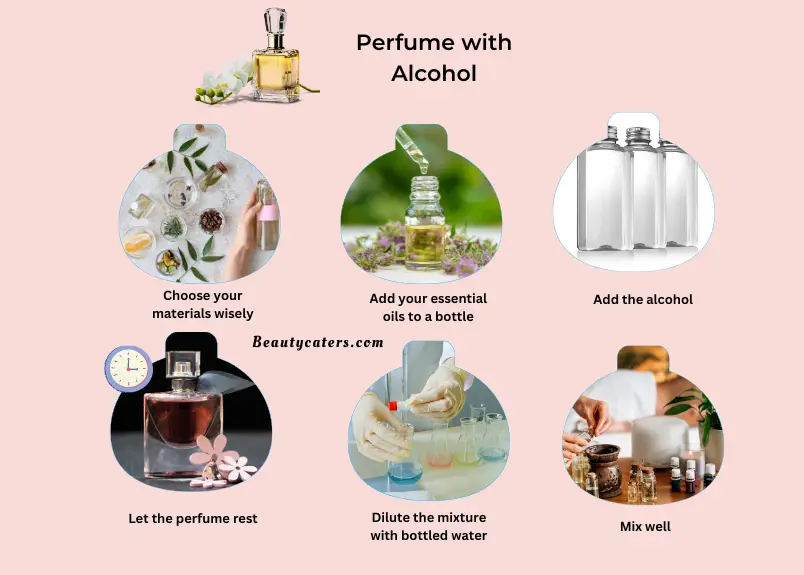
Tip: 3
Buy the products from certified stores to avoid skin damage from irritating compounds.
Step 2: Add your essential oils to a bottle.
As a first step you should make a proper blend of your essential oils with the carrier oil.
In one of the clean bottles, add 2 tablespoons of carrier oil. Then add the 30 drops of the 3 essential oils you selected: 9 drops for your top notes, 15 for the middle notes and 6 drops for the base oil.
In case you need to make more perfume always consider the ideal ratio:
- 20% for the top (or head) notes
- 50% for the middle (or heart) notes
- 30% for the base notes (or bottom notes)
Tip: 4
If one of your oils has a stronger aroma than the rest, you will have to balance the quantities so that it does not predominate over the other essences. Experiment to make sure you don’t make mistakes.
Step 3: Add the alcohol
Once you have the mixture of essential oils in the base oil, you should add the alcohol to enhance the aromas. Pour the 6 tablespoons of alcohol into the oils.
Fun fact: some perfumers also use vodka for this step. Don’t be afraid to experiment to identify which works best with your blend.
Step 4: Let the perfume rest
Resting is key for the perfume to gain strength, so let the mixture of oils with alcohol rest in the bottle and make sure it is kept out of the sun’s rays.
It should rest for at least 48 hours. But we recommend leaving it for 7 days to 3 weeks for the scent to gain strength and last longer. Some perfumers can extend this step up to 6 weeks.
You can check the bottle whenever you need to see how intense the scent is.
Step 5: Dilute the mixture with bottled water
Since the oil essence with alcohol has the aromatic intensity you are looking for, you can add the 2 tablespoons of purified water to the same bottle. This will help dilute the intensity a bit and provide better consistency.
Tip: 5
You can also create a balm instead of a perfume! Just add melted beeswax instead of water. Be sure to pour the hot mixture into the container you’ll be storing it in before it solidifies.
Step 6: Mix the ingredients well
The time has come to mix all the ingredients together! Cap the bottle and shake it vigorously for about a minute, this will help you to have a proper blend of aromas.
Step 7: Strain your perfume
To avoid leaving impurities in your perfume, it is important that you filter the mixture you got from the oils with the water. Place the funnel in the clean leftover bottle and place the coffee filter on top of the funnel.
Pour the contents carefully through this strainer and your perfume is ready.
6 Steps to make perfume at an Industrial scale
In contrast to home-made perfumes, the process for making perfumes on an industrial scale takes much more work and involves very specific techniques. Here are some of them:
Step 1: Obtaining the ingredients
As in the home process, it is also important to have all the ingredients on hand to start producing perfumes. The difference is that, on an industrial level, getting everything you need, can be more complicated.
After all, large quantities of flowers, essences, oils, and even preservative chemicals are needed. And it takes time to extract the natural essences carefully. In fact, it takes tons of petals to get one kilogram of essential oil.
That’s why synthetic ingredients have gained popularity, in order to mimic natural essences and generate exquisite fragrances.
Fortunately, major brands and original perfumes continue to rely on the use of natural products.
For the harvesting of flowers and fruits, perfumers recommend sunny hours to ensure fresh products and thus facilitate the extraction of aromas into essential oils.
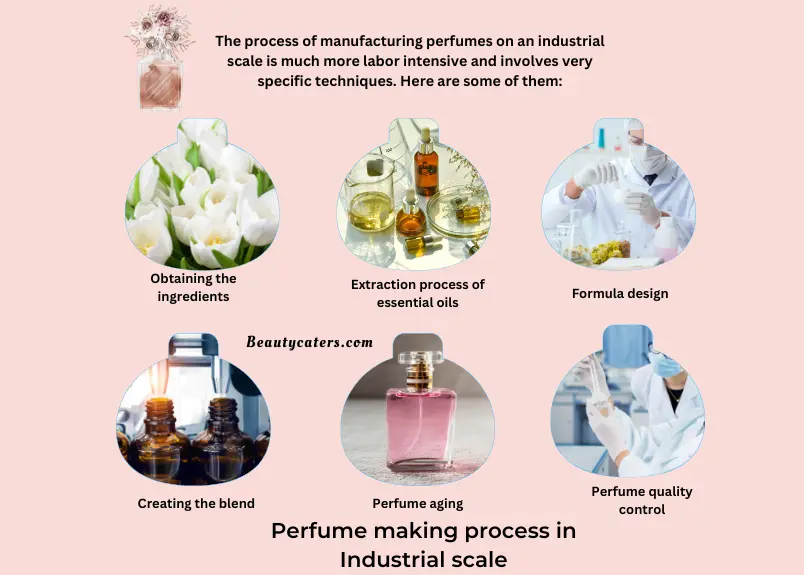
Step 2: Essential oil extraction process
To produce an exquisite and long-lasting fragrance, it is necessary to have the right essential oils for its manufacture.
In the industrial process, essential oils are usually extracted from flowers, fruits and plants by different methods:
- Expression: this is the simplest method and is used for large-scale extraction of oils. It is used in citrus aromas and pressure must be applied to the fruit until it releases juice rich in fatty compounds.
- Distillation: in this process, water is prepared with aromatic plants and boiled, the volatile elements are separated through tubes and distilled in a second container to obtain clean and concentrated oil.
- Extraction: here the flowers and fruits are dissolved in substances such as ether or hexane, resulting in an essential oil substance ready for use.
- Enfleurage: this is a technique in disuse as it used animal fat to trap the aromas, but is impractical for industrial processing.
Depending on the type of industry and their budget, they select the most suitable method for the essential oils they will use when making a perfume.
Step 3: Design the perfume formula
Since these perfumes will be made on a large scale, it is necessary for perfumers to have a pre-designed formula that they will replicate to make a large number of fragrances.
To do this, the creators spend months or years designing the perfect scent that they will present to the market.
You should be careful while using chemical and synthetic elements to ensure that the products are safe for people.
Step 4: Creating the blend
Once the perfumers’ formula (also known as the creative “nose”) is ready, the ingredients are combined on a large scale with the correct proportions.
The process of making perfumes can take a great deal of time, as there are more ingredients to mix and some designers even request unusual ingredients.
You also need to ensure that the alcohol added is in the right proportions as required for each formula. For example, perfumes have the least amount of this ingredient, while colognes include the largest amounts.
Step 5: Perfume aging
The manufacturing of a good perfume does not end when the mixture is made with alcohol, it needs to age. For that, the essence is placed in a dark room for several months.
The objective of this technique is to allow the essential oils to bind perfectly with the alcohol added to the formula. For this to be achieved, it is necessary not to touch the bottle during the period established by the perfumers.
Step 6: Care for the quality of the perfume
At the industrial level, it is important to make sure that the essence is in its best proportion, therefore, the quality of the perfume is evaluated.
In case it has been produced with natural products, it is important to verify that they have been properly mixed to create the fragrance that was sought. In fact, some perfumes that use neutral animal oils as a base may not have been properly blended.
Fortunately, there are now animal additive-free products that facilitate uniformity of the blend.
After this evaluation, all that remains is to bottle and distribute.
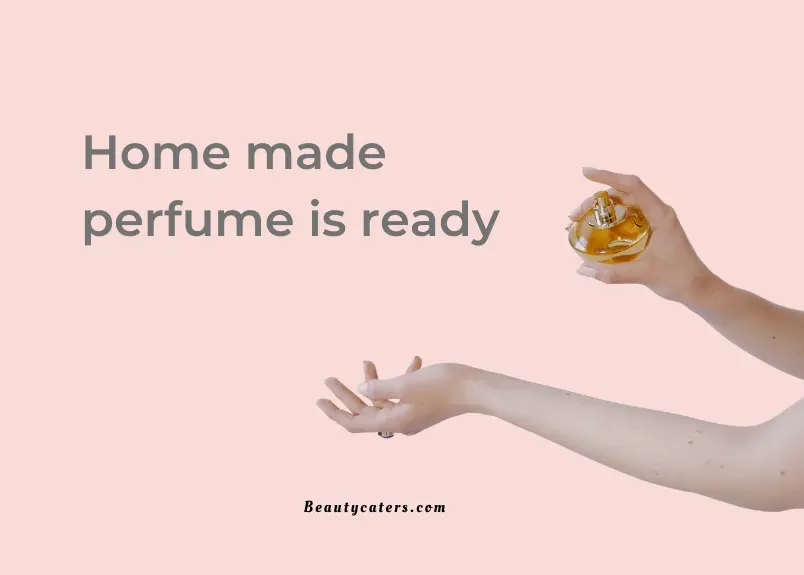
Summary: How to make perfume at home
If you love to innovate, you already have more ideas for making a fragrance. Just remember that the product you make yourself does not have a very long shelf life, maximum 3 to 6 months.
Now that you know how to make homemade perfumes, you can also evaluate the quality of those manufactured in the industry.
At Beauty Caters, we love to hear your opinion. Send us a message from the contact page to let us know if you found this guide helpful. Also, share it with your friends, so they can have the fun of making perfume at home.
You may be interested in women’s best Zara perfumes.

